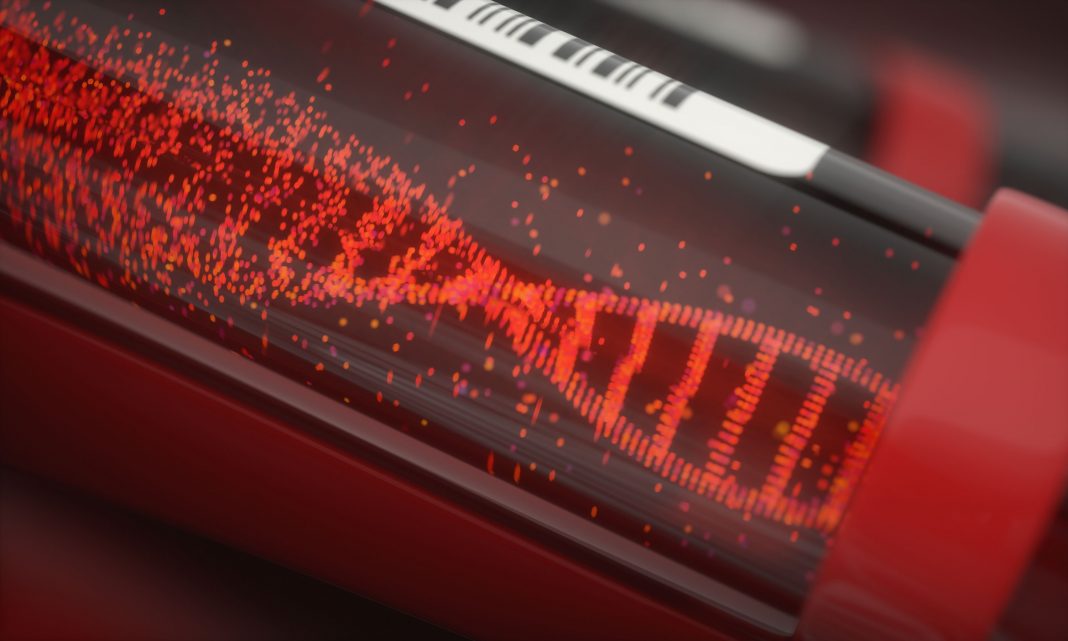Do you have cancer or not? This seemingly simple question could be answered by a simple test that looks for just one DNA signature, an epigenetic pattern that emerges in every cancer. Even better, the test works on circulating free DNA, molecular fragments that drift through easily obtained body fluids. And—perhaps best of all—the test doesn’t rely on fancy equipment such as a DNA sequencing instrument. It detects a simple physical event, a color change or an electrochemical signal, that occurs when cancer-reprogrammed DNA clumps around gold nanoparticles. The test is so simple and easy that it could be a natural for point-of-care diagnostics.
Such a test has been devised by researchers from the University of Queensland’s Australian Institute for Bioengineering and Nanotechnology (AIBN). The researchers, led by Matt Trau, Ph.D., professor of chemistry at the University of Queensland and deputy director and co-founder of AIBN, examined epigenetic patterns on the genomes of cancer cells and healthy cells. Specifically, the researchers looked for patterns of molecules, called methyl groups, which decorate the DNA. These methyl groups are important to cell function because they serve as signals that control which genes are turned on and off at any given time.
In healthy cells, these methyl groups are spread out across the genome. However, the AIBN team discovered that the genome of a cancer cell is essentially barren except for intense clusters of methyl groups at very specific locations.
This unique signature—which the scientists dubbed the cancer “methylscape,” for methylation landscape—appeared in every type of breast cancer they examined and appeared in other forms of cancer, too, including prostate cancer, colorectal cancer, and lymphoma.
“Virtually every piece of cancerous DNA we examined had this highly predictable pattern,” said Dr. Trau, who is the senior author of a new paper that describes how the pattern could lead to an entirely new approach to cancer diagnostics. The paper, titled “Epigenetically reprogrammed methylation landscape drives the DNA self-assembly and serves as a universal cancer biomarker,” appeared December 4 in the journal Nature Communications.
“We examine the effect of levels and genomic distribution of methylcytosines on the physicochemical properties of DNA to detect the methylscape biomarker,” the authors wrote. “We find that DNA polymeric behavior is strongly affected by differential patterning of methylcytosine, leading to fundamental differences in DNA solvation and DNA-gold affinity between cancerous and normal genomes.”
The paper went on to describe how methylscape differences were exploited to develop simple and highly sensitive and selective electrochemical or colorimetric one-step assays for the detection of cancer. According to the paper, the assays may be completed within 10 minutes. Also, they require minimal sample preparation and small DNA input.
So far, the University of Queensland team has tested the new technology on 200 samples across different types of human cancers, and healthy cells. In some cases, the accuracy of cancer detection runs as high as 90%.
“It works for tissue-derived genomic DNA and blood-derived circulating free DNA,” noted Abu Sina, a researcher in Dr. Trau’s lab and a co-author of the current paper. Like healthy cells, cancer cells are always in the process of dying and renewing. When they die, they essentially explode and release their cargo, including DNA, which then circulates.
“This new discovery could be a game-changer in the field of point-of-care cancer diagnostics,” Sina added. The test is still imperfect, the team acknowledged. Nonetheless, the team expects that it will only get better with time.
“We certainly don’t know yet whether it’s the Holy Grail or not for all cancer diagnostics,” concluded Dr. Trau, “but it looks really interesting as an incredibly simple universal marker of cancer, and as a very accessible and inexpensive technology that does not require complicated lab-based equipment like DNA sequencing.”


